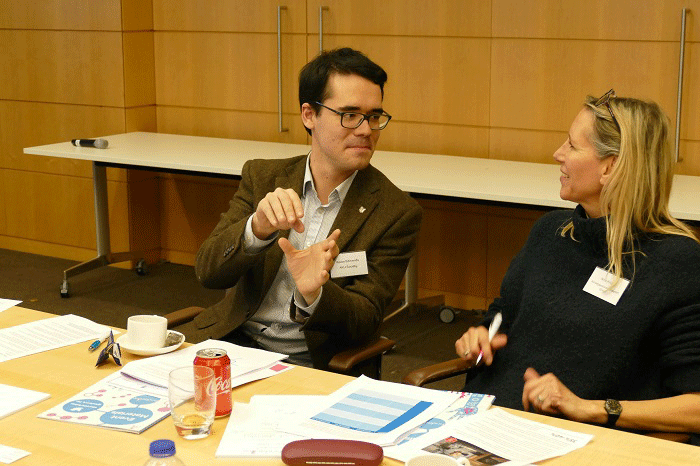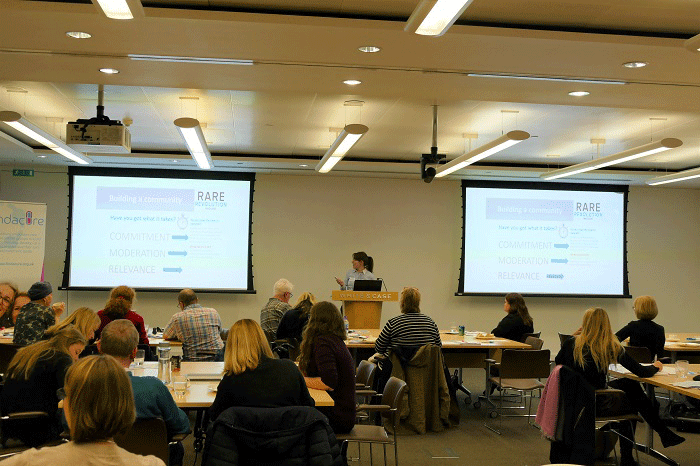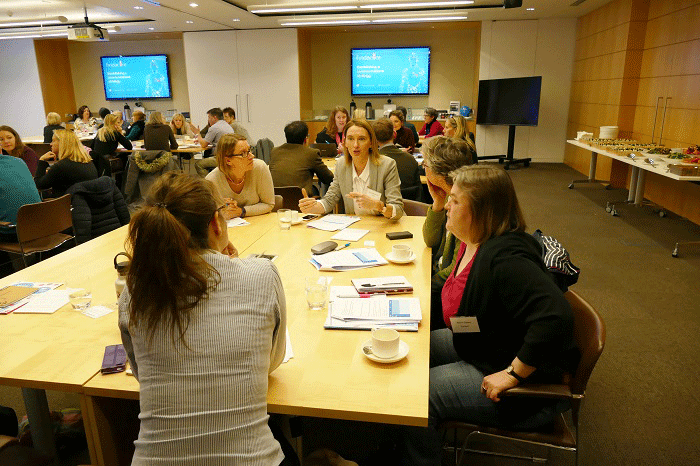There are over 7,000 identified rare diseases. Eighty per cent of them are genetic, like AKU. Together, they affect 3.5 million people across the United Kingdom. Each individual disease, though, only has a small patient population. Because of this, doctors, researchers and the public tend to overlook patients. Pharmaceutical companies often lack interest in developing cures. The drugs can be expensive and there may be little profit to be made.
The AKU Society has organised international clinical trials called DevelopAKUre into a treatment for AKU and is supporting the NHS-run National Alkaptonuria Centre (NAC). Few rare disease patient groups have so far been as lucky. When our CEO, Nick Sireau, was growing the AKU Society in 2012, he realised the need for a new organisation to help other groups get off the ground. Together with physician Tony Hall, he established Findacure. They hired their first employee in 2013, and are now a team of four, supporting projects all over the country.

Findacure has published two books – ‘Rare Diseases: Challenges and Opportunities for Social Entrepreneurs’ (Greenleaf, 2013) and ‘The Patient Group Handbook: A Practical Guide for Research and Drug Development’ (Findacure Publications, 2016). Both provide valuable advice for groups looking to navigate the worlds of drug development and academia. Nick also gave a talk at Imperial College’s Tedx conference, which you can watch online here. He said that Findacure aims to promote research into ‘fundamental diseases’: rare conditions which can be a gateway to understanding, or even treating, much more common conditions.
The AKU Society works closely with Findacure to this day. Two of our staff are mentors on their ‘peer mentoring’ programme, personally helping more recently established rare disease patient groups get organised. We also went to their annual conference on drug repurposing, which we wrote about on this blog last month.

Reece Edmends, our Admin and Communications Officer, was at their online communications workshop on 28th March. He went there with two aims: to network with representatives of other patient groups and share our communications strategy with them, and to pick up a few tips himself. Naturally, the Internet has revolutionised the way rare disease patient groups work. Patients from all over the world, searching for their symptoms online, can potentially get in touch with a patient group. They can then receive much more support for their condition. It’s important, then, to be ‘out there’ online.

Nicola Miller’s talk was one of the highlights of the workshop. Nicola is the founder of the Teddington Trust, which supports patients with xeroderma pigmetosum, and the Rare Revolution rare disease magazine. She runs two online communities, one for the Teddington Trust and another, Rare Revolutionaries, for rare disease patients in general. She stressed the importance of maintaining a vibrant online community for patients. It’s vital to be good gatekeepers for the community, stopping the wrong people from joining. Groups must take seriously the responsibility to protect information and care for members. The AKU Society manages two patient communities, on the sites RareConnect and PatientsLikeMe. They’re more secure than Facebook, and we encourage patients to check them out.

Alongside the talks, Findacure organised breakout sessions where guests were asked to create model online campaigns of their own. The Findacure team were hovering around the room, always ready to hand out tips. They told us always to bear in mind that we have a primary audience and a secondary audience. When we communicate, we should choose the online platforms our audiences are already using. Currently, we tell people about our activities through Facebook, Twitter, LinkedIn, YouTube and an email newsletter as well as through our website. This connects people – in the words of a patient, ‘it is great to know that you are not alone and that there are others whom you can learn from’.
Photo credits: Findacure
